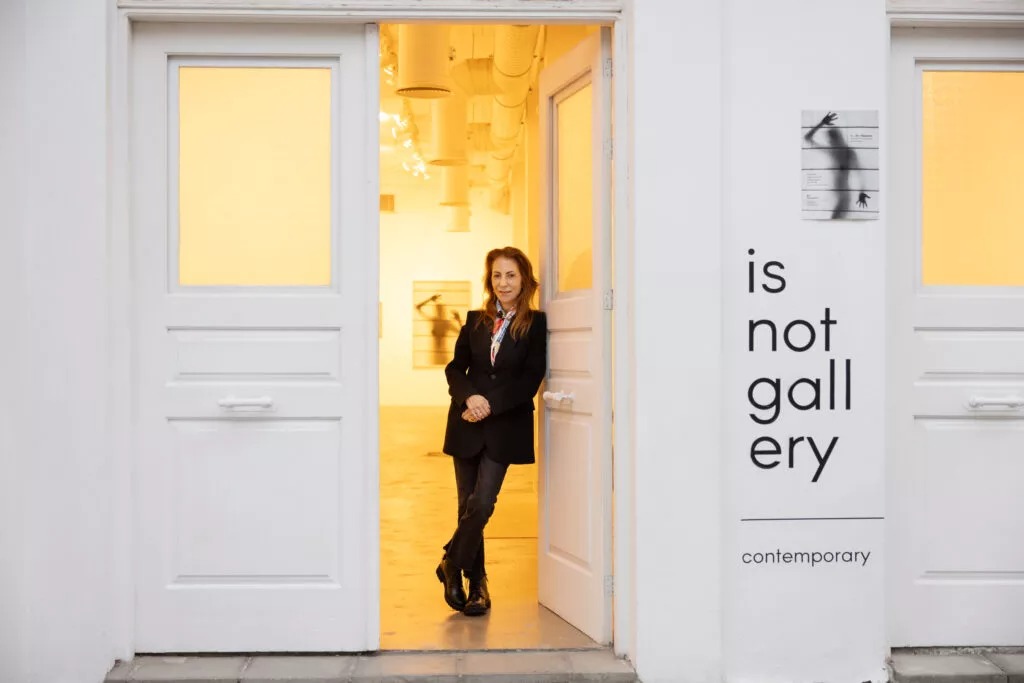The award-winning photographer, a colleague for many years at the Phileleftheros newspaper, presents the exhibition “…en somati” (in body) at Isnotgallery in Nicosia.
It is a series of black and white photographs that constitute the first part of her book “Psycho-Portraits” (published by “To Rodakio”) and date from 1997 to 2023. Antigone Solomonidou-Drousiotou penetrates through her lens beyond the material and reveals the body without the burdens of social conventions and “shoulds.”
How did your journey into photography begin?
My first contact with photography was during my college years, while studying Chemistry at the University of Lausanne in Switzerland. At that time, the world-famous photographer George Rodger, founder of the Magnum Photos agency, was visiting Cyprus because during World War II he covered the Middle East for Life magazine, based on our island. We met through my father’s brother, Nikos, who was friends with him. This acquaintance deepened my interest in photography even further. In 1978, I held my first exhibition titled “Our Daily Bread” with verses by Giannis Ritsos and Nazim Hikmet. When George Rodger saw the exhibition, he encouraged me to attend a series of Documentary Photography classes in Newport, Wales, organized by David Hurn, also a Magnum photographer.
Did you develop your films in your own darkroom when you started?
My father was an orthopedic surgeon, and he had a darkroom in his clinic where he developed X-rays. So, I already had a space set up to develop my films and print my photos. At that time, I didn’t realize how lucky I was to apprentice alongside the world-famous photographer George Rodger. He taught me the darkroom. I remember traveling around Cyprus together and taking photos. And when he left, I would send him all my photos, and he would give me feedback.
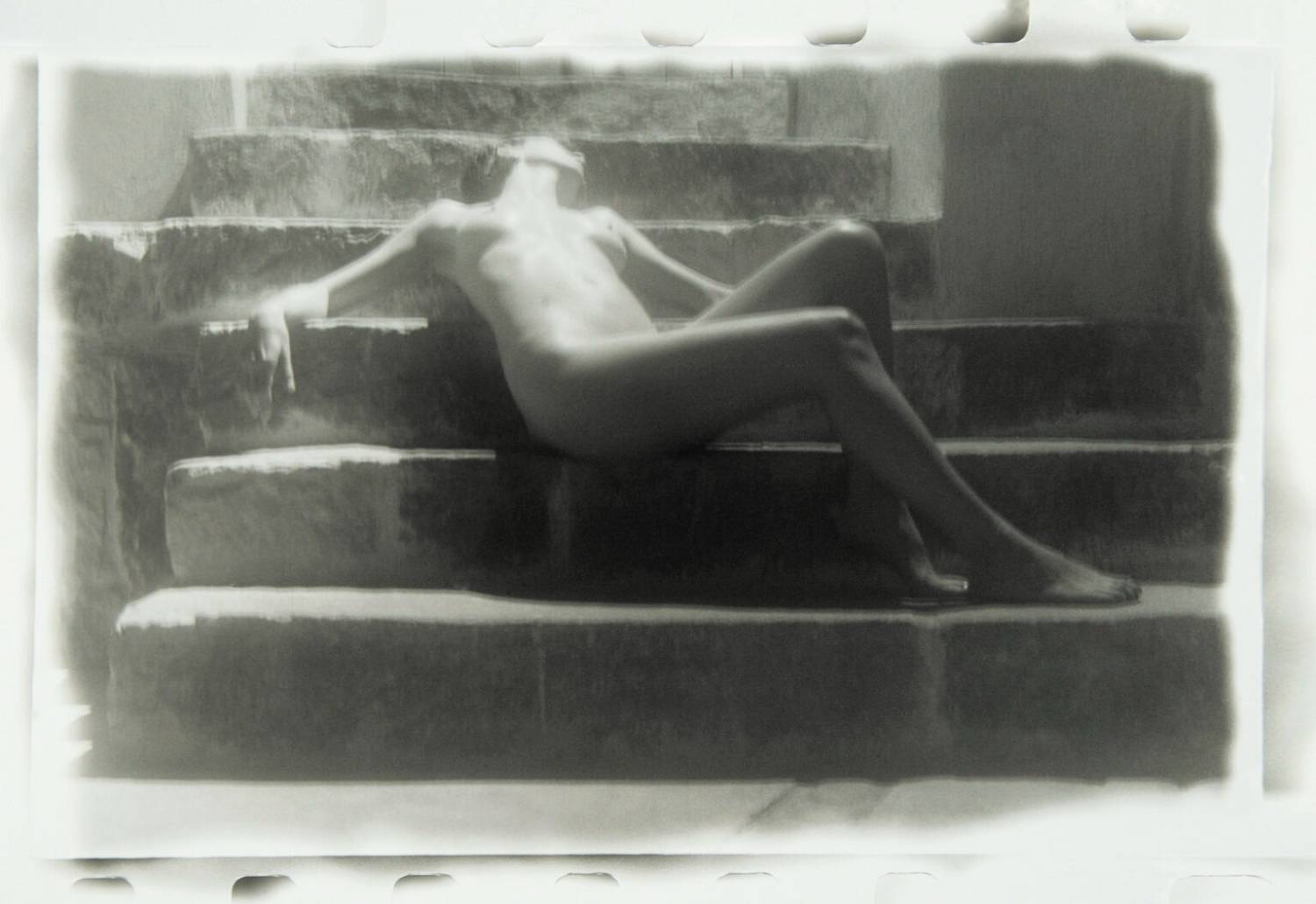
-How did you transition from photography to journalism?
When I returned to Cyprus after my studies, the only place I could work at the time was newspapers and magazines. With the encouragement and help of the late friend Titos Kolotas, I began working with the magazine “Enimerosis,” where the editor-in-chief was Panagiotis Papadimitriou. Then I started writing about culture, conducting interviews, and eventually, journalism won me over. Photography became secondary over the years as I continued to work as a journalist in the Phileleftheros group.
In the publication “Psycho-Portraits,” which is released concurrently with your exhibition “…en somati” at Is Not Gallery, photos from 1997 are included. What message did you want to convey through this series?
As I write in the introduction of the book, I wanted to outline the light we have within us. Everything started with the series “From Light” in 1988. The first photos were taken in the abandoned house of the Terpsichore School, the kindergarten I attended. Signs of childhood memories. Metamorphoses in the immaterial field of light. The next stop was the Medieval Museum of Cyprus, a flawless revelation.
And then the sea, with the shipwreck at Akrotiri. The energy that permeates through the body. Through the movement and liberation of the body, I showed the light. And I married these photos with the verses of Solomon’s “Song of Songs,” translated by Lefteris Papadopoulos. I was listening to Hadjidakis’ “Great Love” during that period. It was a fusion of poetry and photography. I presented the unity of the photos “From Light” in 1996, on Easter Monday, at the theater of Agios Athanasios, along with music and recitation.
Then I proceeded to the section “…en somati,” which constitutes the second part of the book “Psycho-Portraits.” It consists of photos of four naked individuals, two women and two men. My models were familiar faces of various ages who cooperated spontaneously and freely. I wanted to show the body as we are born, without the burdens of social conventions and “shoulds,” but also as a temple of the soul. “Light penetrates uninvited/ Misspells the body/ Without fabrications/ Without veils of life/ It seeks the soul/ That eternal part of perception!” I write in the introduction of my book.
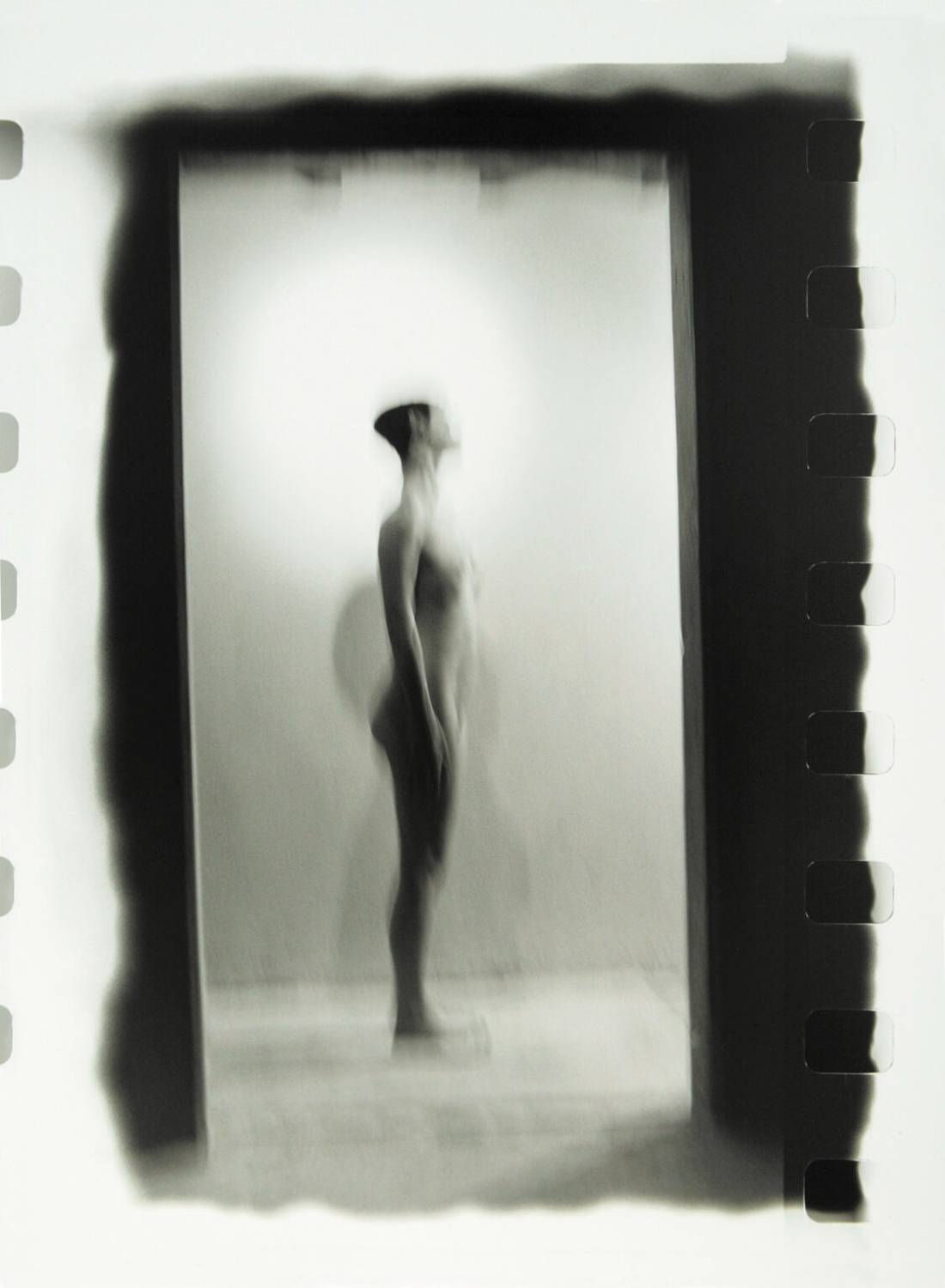
How did you choose the locations where you photographed the people you used?
The energy of each space and the light are very important elements. For the photos “…en somati,” for example, I went to the Hamam Omerye in Nicosia, a 16th-century space with unique energy.
Which stage of photography do you enjoy the most?
The moment of creation, that split second when you feel you have communication with yourself. That’s unique. Particularly magical were the hours I spent printing the photos in the darkroom, back when we used film.
Some of your photos activated the poetic impulse of writer and poet Antonis Georgiou, who wrote verses to accompany the photos. How did your collaboration come about?
Antonis and I have been friends for decades. Antonis saw the first photos I took in 1997 during a meeting at a café in Limassol. At that time, he didn’t say much to me; in fact, he felt disappointed, as he later told me. After a few days, he wrote some verses, having in mind, as he says, “the naked beauty of these photographs.” Those writings remained for years and functioned mentally as a commitment. And as the years passed, we remembered them again, until that Christmas night when we made the promise to complete the publication with a direct phone call to Julia in Rodakio and the beginning of the cover photoshoot, while those initial verses were completed by him. The result is that “Life Fragments in Verse Shards – for Body Fragments” exceptionally complement the photographs.

Which verses do you distinguish?
The verses I distinguish from his are as follows: “In body, you say as if you mean soul / in body, I say and mean body / in body, you say as if you mean light / and I throw the light down / for them to step on / in body / we find / whatever each one calls.”
Another significant photographic book of yours was “Lockdown Days” during the coronavirus. Was this your way of exorcising fear? The need to record the new reality with the restrictive measures for the coronavirus, the thoughts, the feelings, led me to the streets with a camera. It was like I wanted to confront the fear. From March 27 to May 4, 2020, I wandered around Limassol. The result was this black and white photographic document, guided by the memory of the internal journey during the quarantine days. I tried to capture the silence and wondered, how to say so much in one click?
And when the hours of relaxing the measures came, I spoke with Rodakio editions in Athens, and the book was released in September 2020. The “Psycho-Portraits” were also published by Rodakio, and the first exhibition took place at the beautiful space of the bookstore, “Fotagogos.” Currently, the exhibition is presented at the Is Not Gallery in Nicosia until March 2, under the title “…en somati.”
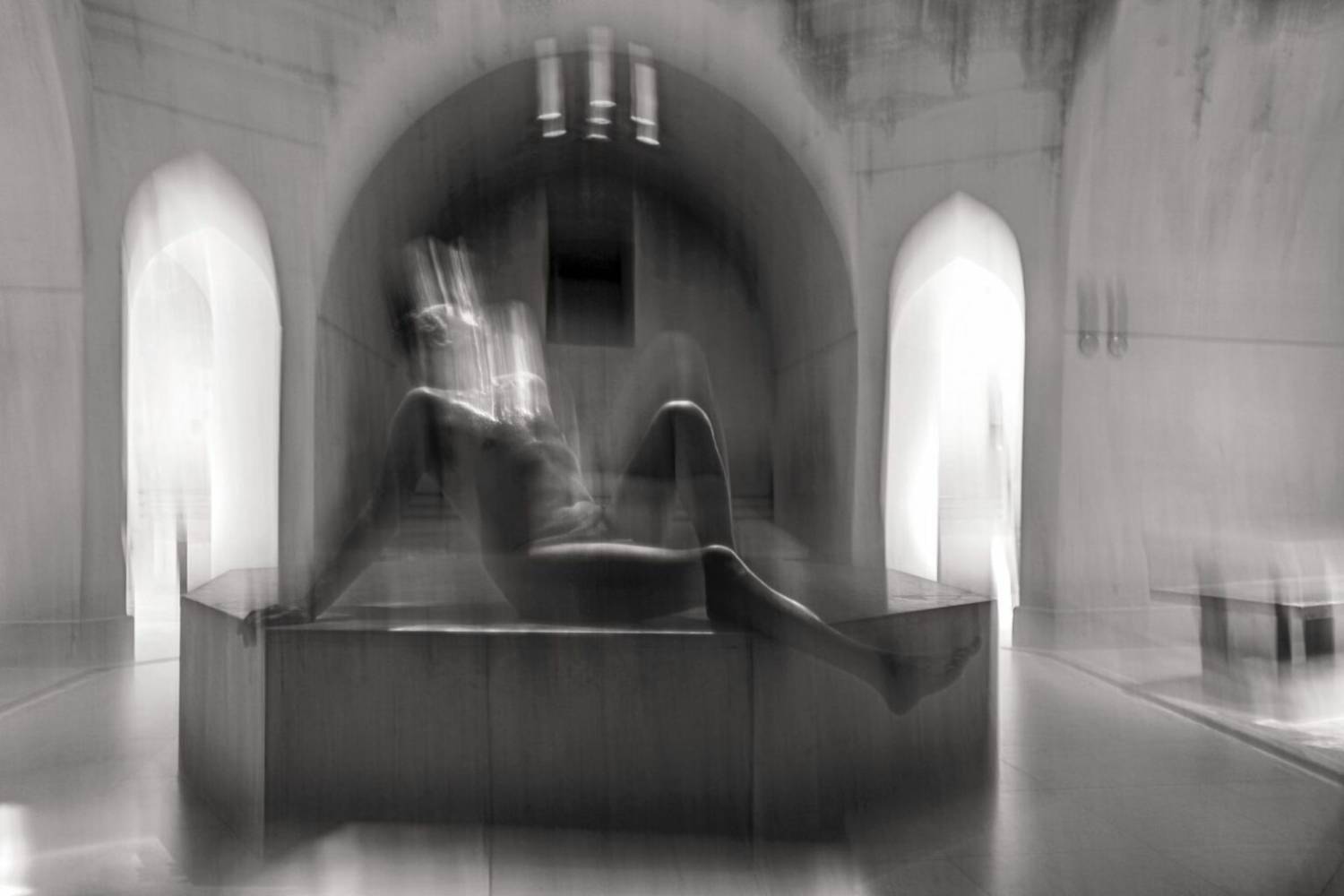
You have experienced the transition from black and white film to digital reality and from the darkroom to the virtual space of Lightroom. How did you see this transition?
The darkroom is something I miss. After taking a photo, the creative part continues in the darkroom with printing. However, it’s very difficult today to maintain a darkroom. Of course, with digital photography, you see immediately what you have photographed, very important; you don’t have to wait to develop the film in the darkroom as before. This transition from the darkroom to digital photography is also reflected in the album “Psycho-Portraits.”
Do you have influences from other photographers?
I am influenced primarily by Magnum photographers, George Rodger, David Hurn, Henri Cartier Bresson, Joseph Koudelka, Nikos Economopoulos, Konstantinos Manos, and a plethora of others.
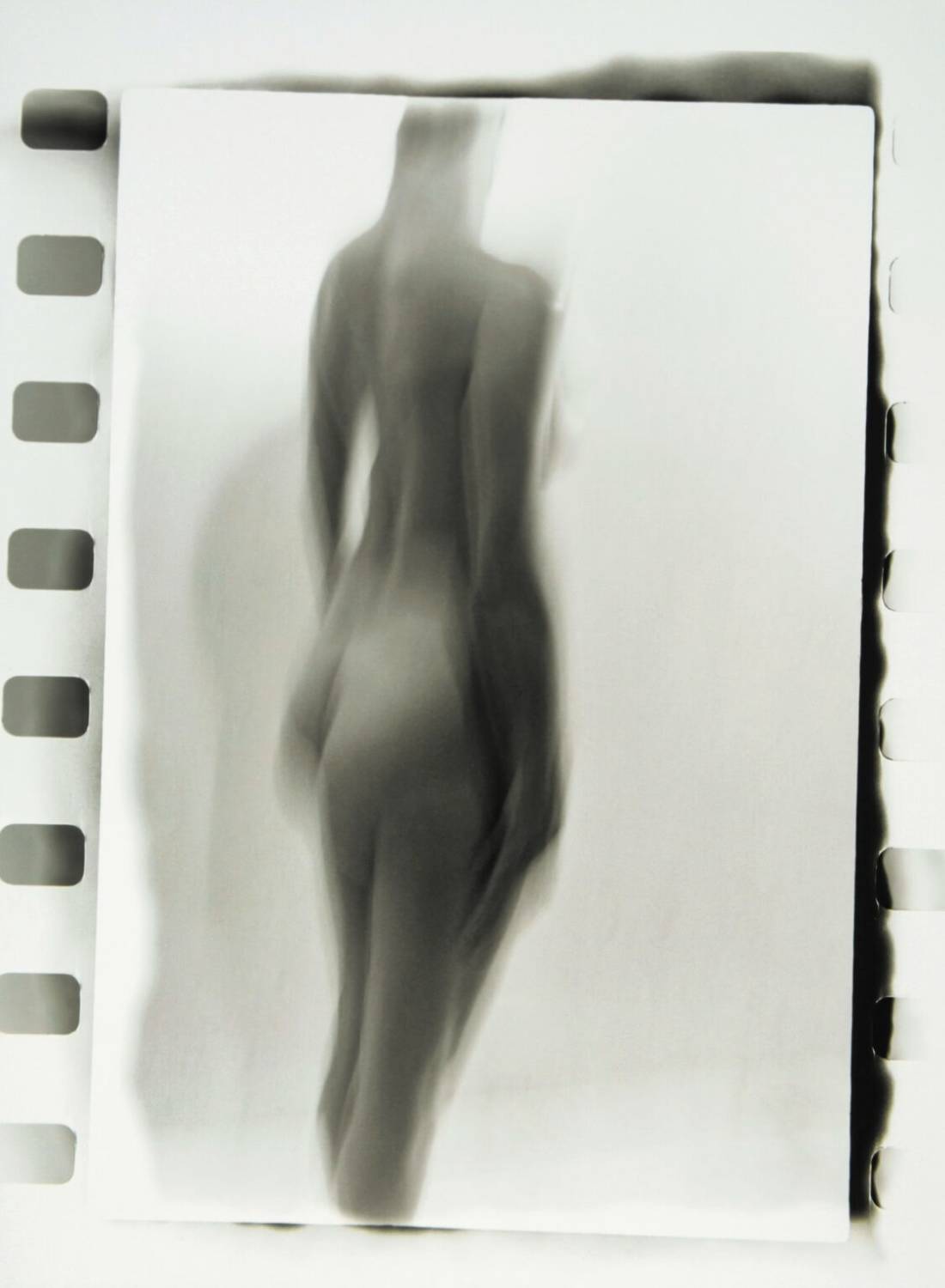
“I GREW UP IN MY PARENTS’ CLINIC”
What is it like growing up in a household with two doctor parents?
It’s a unique experience. I was born and raised in Limassol. Our home was on the third floor of the clinic. Our daily life revolved around the clinic. My mother, Lina Tornaritou, was an anesthesiologist-pediatrician, and my father, Solonas Solomonides, was an orthopedic surgeon. Both my grandfathers were doctors too, one on my father’s side was a gynecologist in Famagusta, and my mother’s father was an ophthalmologist in Limassol. I lived in an era when medicine was a calling. I learned respect, caring for others, appreciation.
Your mother, Lina Solomonides, was also a significant writer. Was she a progressive person?
Yes, she was progressive and dynamic. Under the pseudonym Aliki Lemezi, she published her first two novels (in 1959 and 1960, respectively). Four more books followed: the novel “Here Lies” (1964), the novel “The Journey” (1969), the novelistic chronicle “Experiences Cyprus 1974” (1976), which was honored with the state prize, and the “Autobiographical and Other Unpublished Texts” (2011) edited by Lefteris Papaleontiou. All were positively reviewed by critics both in Cyprus and Greece. Since I can remember myself, I saw her in her office entering the clinic, writing on the typewriter, and publishing books. In our school, we studied some of her texts in the Modern Greek language class.
Was Lina Solomonides politically active?
She had clear and strong political opinions; she spoke straightforwardly, but she never belonged to a party. She was a free person and always voted according to what she deemed right for the country at that moment. She was a very special person who didn’t seek publicity.
How do you remember Limassol from your childhood years?
It was a beautiful city with a high quality of life where people knew each other, there was contact and love, as was the case throughout Cyprus. A seaside city with a large port that opened horizons to other cultures and countries. Contact with the outside world made Limassolians more open to the new, more tolerant of diversity. A pioneering city with distinguished personalities in literature and the arts. The city of revelry and entertainment, with carnival being part of every Limassolian’s life. The city suddenly grew in population after the Turkish invasion. It provided shelter to many refugees, mainly from Famagusta. That’s when its evolution began. And over the years, the reference points began to disappear. It expanded.
Do you think Limassol developed in the wrong way?
I believe the development did not happen with proper planning. The years after the invasion were difficult, with different priorities, but along the way, we could have foreseen where the evolution was leading us. The high-rise buildings, for example, completely changed its image. It saddens me that the city lost its character. I believe that developments should be made sensibly so that the environment is not destroyed in the name of modern development.
What role did the sea play in your life?
It played and plays a very important role. I cannot imagine myself without the blue or deep green of the sea, without the secret meanings of its waves, and without its eternal youthfulness. The sea travels me. It calms me. It soothes me.
Nicosia Isnotgallery (99569498). The exhibition of Antigone Solomonidou-Drousiotou titled “…en somati,” curated by Xenios Symeonides, is presented until March 2. Free 18.2.2024


